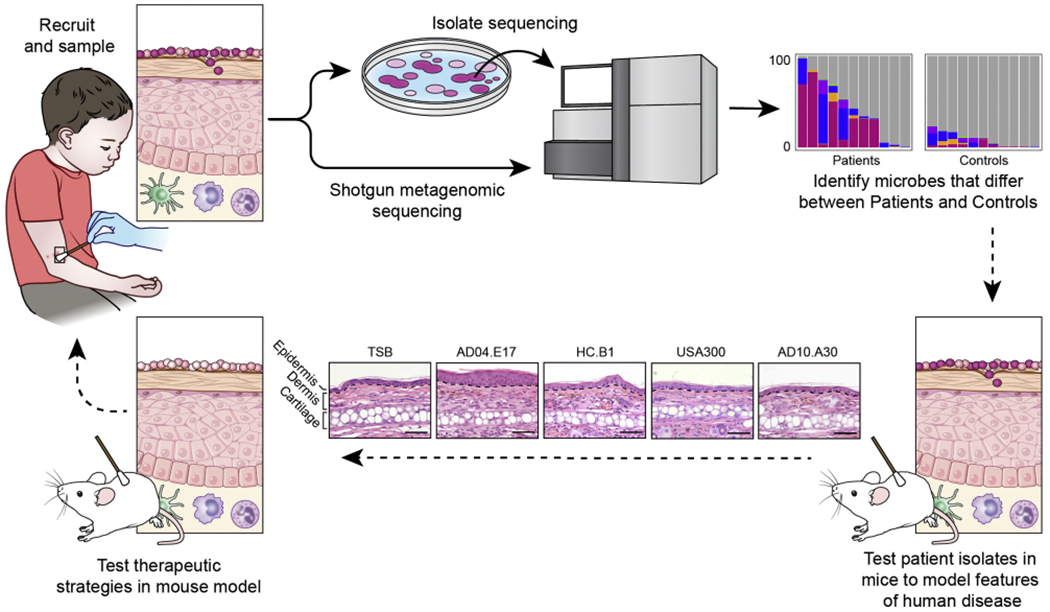FIG 1.

An example of a pipeline for skin microbiome studies in patients with AD. The pipeline can begin by posing a scientific question, with subsequent recruitment of patients and control subjects, phenotyping of patients with AD, and collection of clinical samples (top left). Microbiota from clinical samples can either be directly sequenced to study the complex communities of microbiota (the microbiome) or first cultivated to investigate individual clinical isolates through whole-genome sequencing (and/or with model systems). Shotgun metagenomic sequencing refers to the sequencing of all genetic material in a complex sample and can provide information on bacteria, fungi, and viruses within the sample; the functional potential of the mixed microbial communities; and the different microbial strains. Sequencing both cultivated isolates (whole-genome sequencing) and the complex communities of microbes (shotgun metagenomics sequencing) can provide complementary information. The bioinformatics analyses of microbial sequencing data can identify the microbiome differences between patients with AD and healthy control subjects, which is graphically represented by bar charts that indicate the relative abundances of different staphylococci shown as different colors. The y-axis of bar charts represents 0% to 100% relative abundance. Differences in the microbiota found on patients versus control subjects can be studied in mouse models using clinically relevant isolates to examine microbial strain-level differences. For example, differences in host responses can be observed in the histology (lower panels) from mice who undergo application of different patient-associated staphylococcal strains (AD10.A30, USA300, HC.B1, AD04.E17)1 versus tryptic soy broth (TSB) control; comparisons can be made in epidermal thickening and immune cell infiltrates elicited by different strains. Further studies might provide insight into the role of the skin microbiome in disease pathogenesis, which could lead to development of microbiome-targeted therapeutics for patients.
